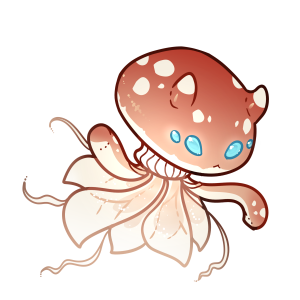 Jelluxi Jellis xixi
Jelluxi Jellis xixi
Pets

APPEARANCE
The average Jelluxi is comparable in size to the torso of an average Dextroluma. The most abundant type of Jelluxi are brown regolians, however, Jelluxi come in a number of different appearances, some of which seem to be influenced by seasons or even by strange magics. To see the currently available different types of Jelluxi, please visit the Encyclopedia.
HABITAT
The original Jelluxi is found in the Sky Barrier and occasionally in Solaris and Lunaris, where it floats along on air currents and occasionally on clouds.
Behaviors
Jelluxi make squeaky chirping noises when they desire to communicate with one another. They tend to be group-oriented creatures who identify themselves as being part of a 'colony' of other Jelluxi in their vicinity - or with other species in their proximity. Most - wild or domesticated - are known for their calm dispositions. They can be trained to do tricks on occasion, but most seem uninterested.
DIET
Wild Jelluxi consume mushroom spores in the air, as well as rain, though some have been observed consuming the eggs of other creatures on occasions where mushrooms were low in numbers. Domesticated Jelluxi seem to be quite omnivorous, although they do need mushroom spores for the nutrients they provide. Still, most Jelluxi will happily try eating anything put in front of them...
ROLES
Jelluxi could best be described as a sort of filter feeder in the wild for their consumption of large quantities of mushroom spores. Domesticated ones are just pets, generally speaking.
REPRODUCTION
Spore-Egg combination.
LIFESPAN
Due to the effects of magic, Jelluxi owned by another species will live for as long as their owner does. A wild Jelluxi will typically live between 15 to 20 years.
CORRUPTION
While Jelluxi can become corrupted in the same way as Dextroluma, Gextro, and Draphibians, their habitat makes it extremely unlikely. It has, however, been noted that corrupted jelluxi seem to change from their original variety into something unique to their kind, as do cured ones. It is hypothesized that this is due to their nature being more fungal than animal.

